Karen
and Lee Duquette's FLASHBACK to Rome, Italy with their son, Brian Duquette
July 28 - 31, 1984
 
|
After leaving Milan, Saturday,
July 28, was spent traveling. Once again, the bus driver took a wrong
turn and got lost. She drove in circles and caused everyone to arrive
at the hotel in Rome long after the other busses arrived. When some
people complained to "International Weekends" they
were told that the delay was because the bus driver stopped for gas
and that was why the bus was late. WRONG! WRONG! WRONG! Since the bus
driver was originally following other busses, there was no reason for
her to turn off the highway at the wrong place. But at least the bus
did finally arrive at the right hotel in Rome. |
 |
  |
|
Rome has been the capital city of Italy since 1871 when it became
the capital of the Kingdom of Italy. It continued to be the capital
of the Italian Republic are the monarchy was abolished in 1946. Now,
in 1984, Rome is the country's most populated commune and the third
most populous city in the European Union by population within city
limits. Rome's history spans 28 centuries.
Rome is known as "The Eternal City" and has beautiful
architecture and monuments, great works of art, and world-renowned
food. The Grand Romantic ruins, opulent monuments, graceful fountains,
and ornate statues are all testaments to its wealth and beauty. Karen
and Lee Duquette wanted to experience Rome with their son, Brian Duquette,
who loves history.
This European vacation is a flashback because it was not posted
on this website until many, many years after this website started
when Karen and Lee Duquette began RV travel in 2008. Many photos from
previous travel have been lost, including Rome and most of Europe,
but still, it is worth a mention here. Karen Duquette did her best
to label the photos as correctly as possible.
|
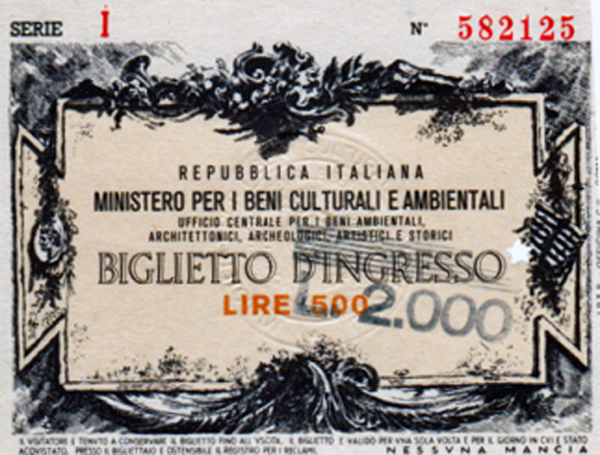
|
Below: Notes about the hotel that Lee,
Karen and Brian Duquette stayed at and a view from the window of one
of their rooms. First of all, the hotel turned OFF the elevators during
the day to save electricity because most tourist were out sight-seeing.
Many of the bus people, including the Duquette's, were on the sixth
floor and they did not enjoy walking six flights of stairs after walking
around all day sight-seeing. Some rooms were lucky enough to have air
conditioning and some did not. However, the air conditioning was turned
off again after most people fell asleep.
One night, Karen Duquette wanted to have the balcony door open for
air since the air conditioning was turned off. But some old lady down
by the pool was cackling loudly for many hours. Many of the
hotel workers were rude. The cafeteria workers all claimed not to speak
English, but one morning when someone told the cashier that he was cheating
people with change, he said - in English, "All Americans
are rich, why shouldn't we get what we can!" One person told
the hotel employees that they were crooks and should be in jail. It
was amazing how rude they were. Yet, this was rated as one of the best
hotels in Rome, at this time.
Karen and Lee Duquette could hear the people in the room next to them,
sneeze, cough and even FART! That is how thin the room walls were. The
closets in two rooms were back-to-back, and Karen Duquette could see
between the cracks of the closets and know if the lights were on or
off in the next room. BrianDuquette was in a room on the other side,
and Lee told him not to call on the phone, because they could just talk
through the wall. There were NO luxuries here. The bathroom sink fell
completely off the wall and the hotel employees acted like it was no
big news. |
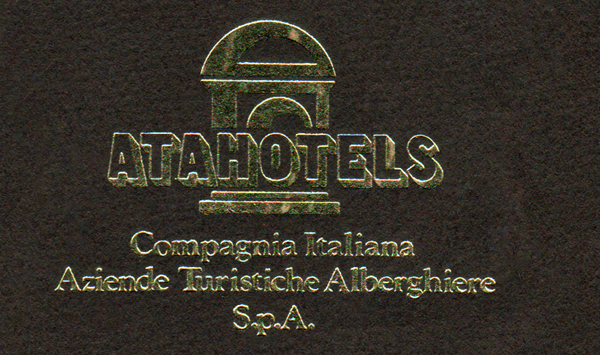 |
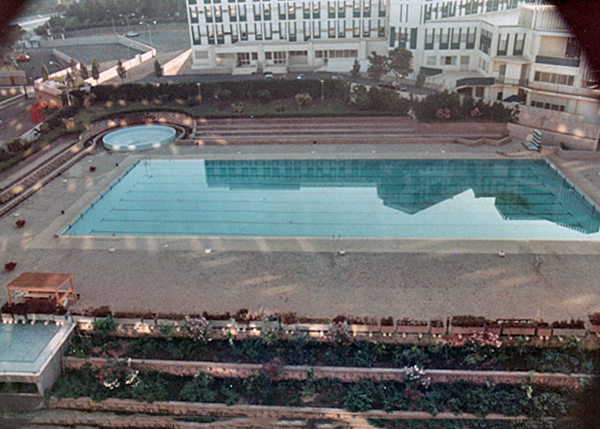 |
 |
 |
Below: Karen Duquette dipped
her toes in the water by the fountain. |
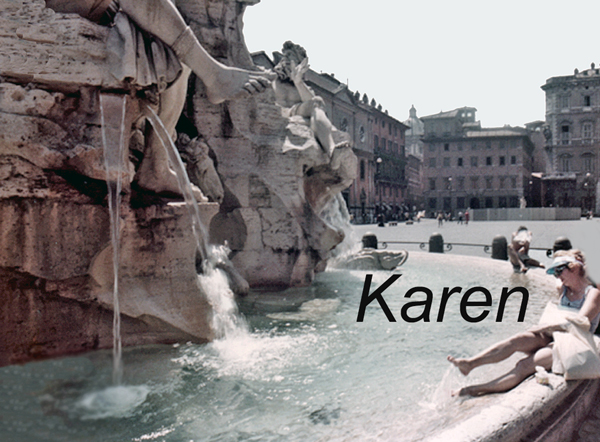 |
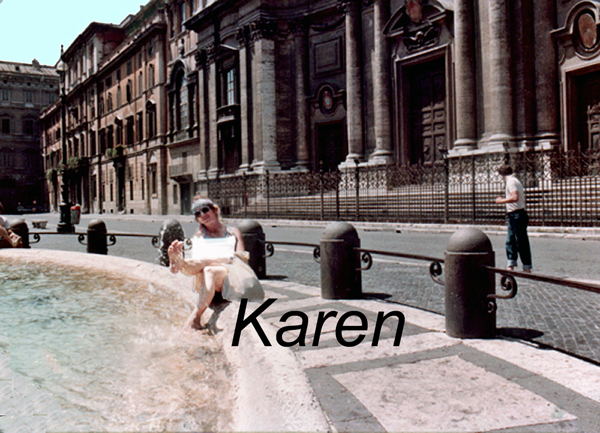 |
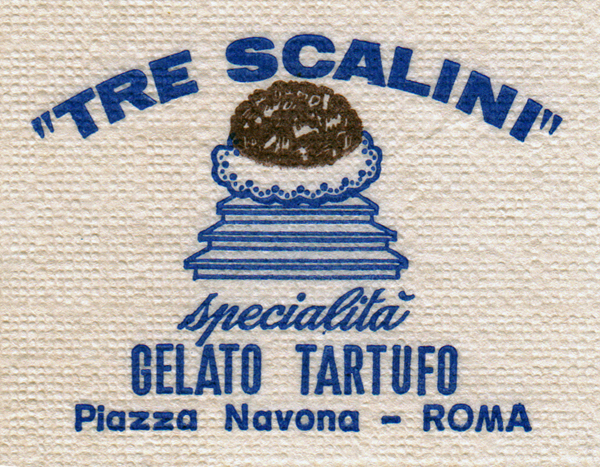 |
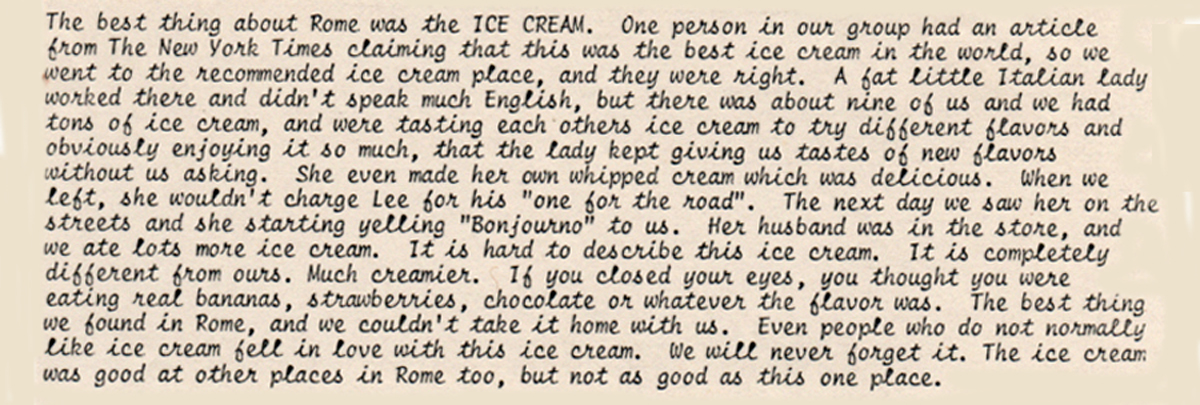 |
Below: Karen Duquette bought
several postcards because she was having trouble with her camera. |
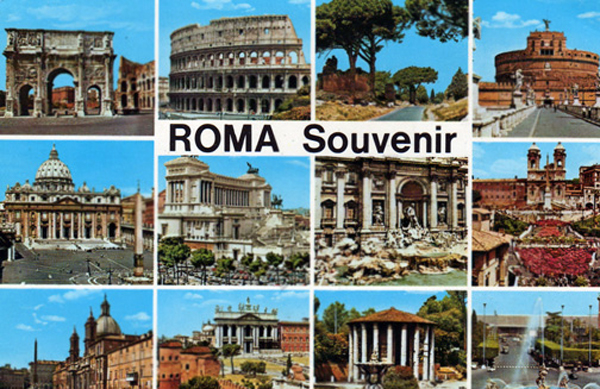 |
Altar of the Nation (Postcards below).
The Victor Emmanuel II National Monument is a national monument built
between 1885 and 1935 to honor Victor Emmanuel II, the first king of
a unified Italy. It occupies a site between the Piazza Venezia and the
Capitoline Hill. It was conceived as a modern forum, three levels connected
by stairways and dominated by a portico characterized by a colonnade.
The complex process of national unity and liberation from foreign domination
carried out by King Victor Emmanuel II of Savoy, to whom the monument
is dedicated, has a great symbolic and representative value, being architecturally
and artistically centered on the Italian unification. For this reason
it is considered one of the national symbols of Italy. It also preserves
the Altar of the Fatherland, first an altar of the goddess Rome, then
also a shrine of the Italian Unknown Soldier, thus adopting the function
of a secular temple consecrated to Italy. |
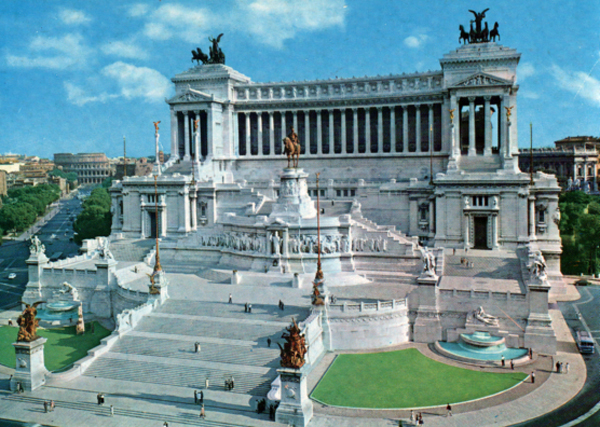 |
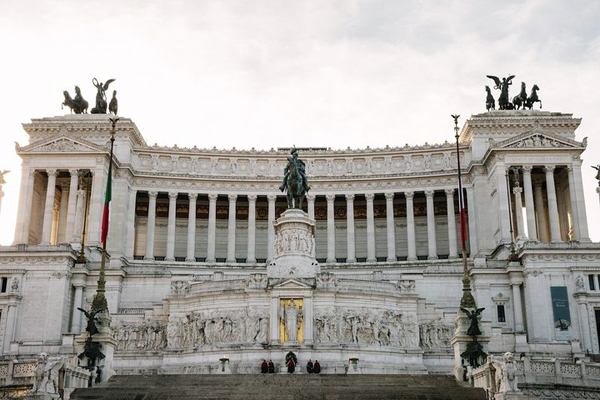 |
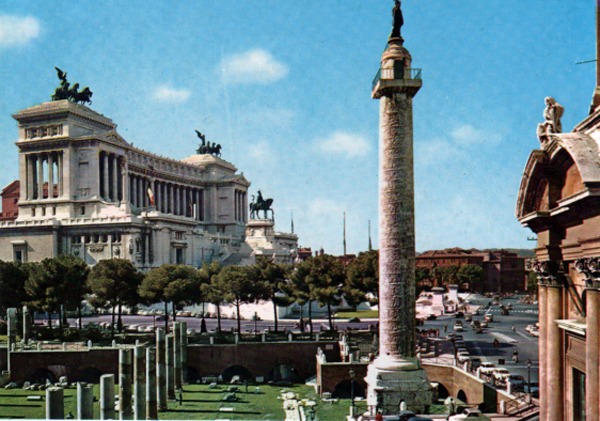 |
| |
Below: Arc of Settinio-Severno
(postcard), at the northwestern end of the Roman Forum is a marble triumphal
arch dedicated in 203 AD to commemorate the Parthian victories of Emperor
Septimius Severus and his two sons, Caracalla and Geta, in the two campaigns
against the Parthians of 194-195 and 197–199 |
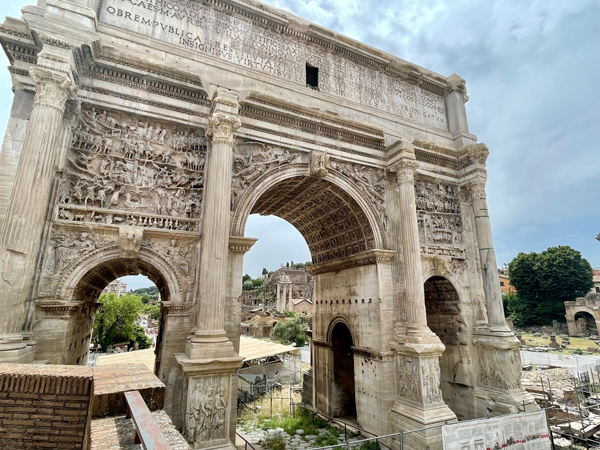 |
| |
Arc de Titus
(postcard shown below) is a 1st-century AD honorific arch, located on
the Via Sacra, Rome, just to the south-east of the Roman Forum. It was
constructed in c. AD 81 by Emperor Domitian shortly after the death
of his older brother Titus to commemorate Titus's official deification
or consecratio and the victory of Titus together with their father,
Vespasian, over the Jewish rebellion in Judaea.
The arch contains panels depicting the triumphal procession
celebrated in AD 71 after the Roman victory culminating in the fall
of Jerusalem, and provides one of the few contemporary depictions of
artifacts from Herod's Temple.
It became a symbol of the Jewish diaspora, and the menorah
depicted on the arch served as the model for the menorah used as the
emblem of the state of Israel.
The arch was the inspiration for the Arc de Triumph in
Paris. It holds an important place in art history, being the focus of
Franz Wickhoff's appreciation of Roman art in contrast to the then-prevailing
view. The photo on the right below, is looking up into the arch. |
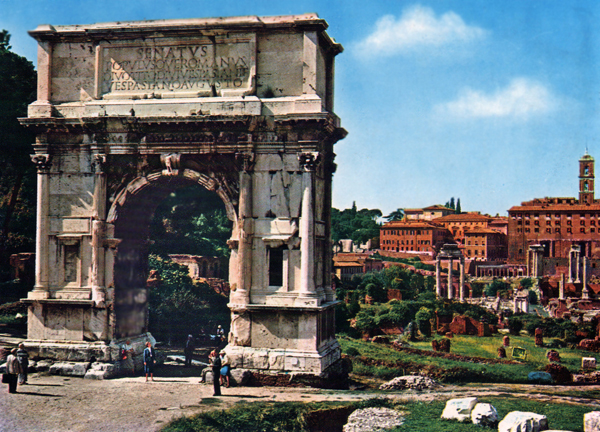 |
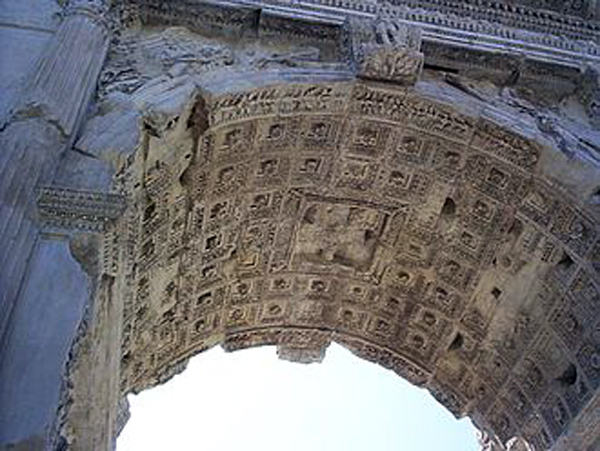 |
| |
Below: Piazza del Campidoglio,
on the top of Capitoline Hill, with the facade of Palazzo Senatorio |
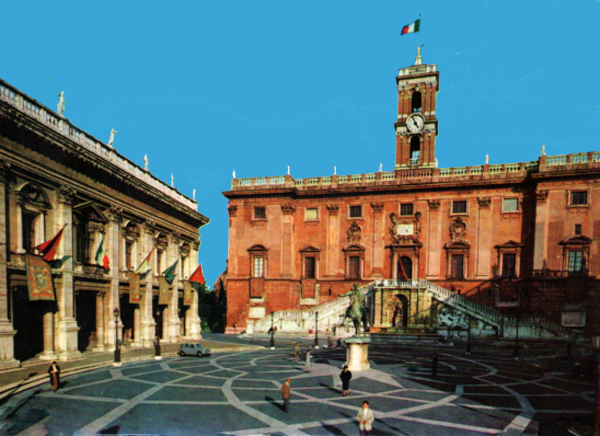 |
| |
Two postcards
and one photo below: Saint Peter's Basilica is an Italian Renaissance
and Baroque church located in Vatican City. It is is one of the most
renowned works of Italian Renaissance and Baroque architecture and the
largest church in the world by interior measure. It is regarded as one
of the holiest Catholic shrines and has been described as "holding
a unique position in the Christian world", and as "the greatest
of all churches of Christendom." |
 |
 |
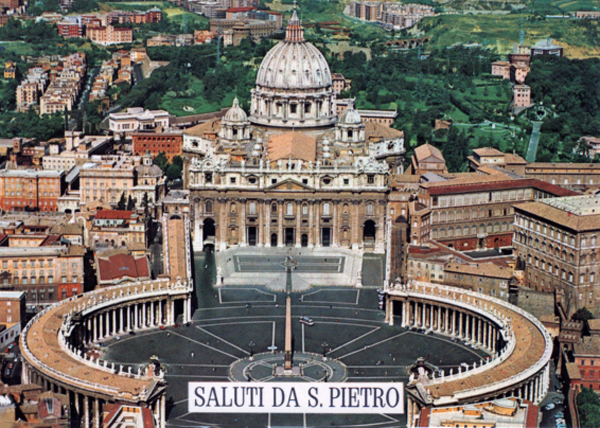 |
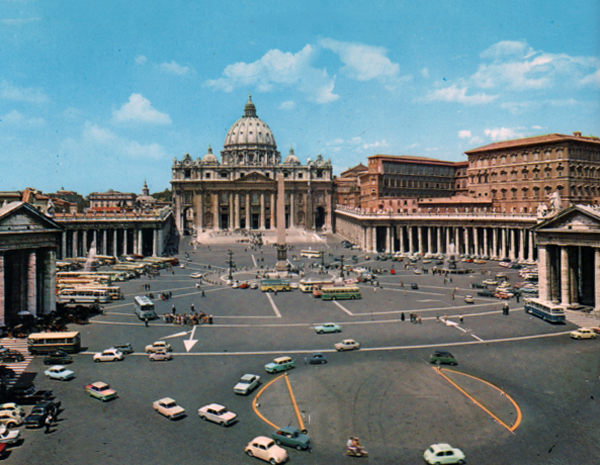 |
Below: (same as shown above)
Saint Peter's Basilica photo by Karen Duquette in 1984. |
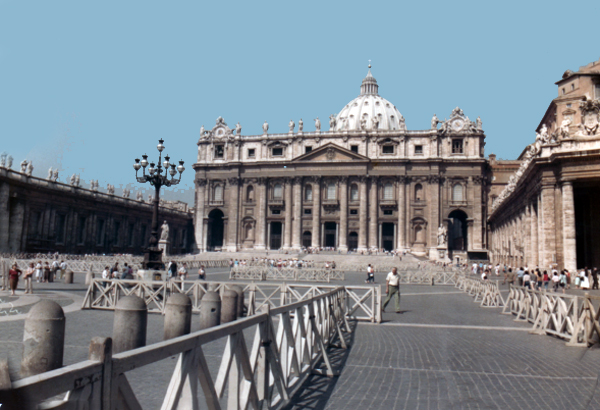 |
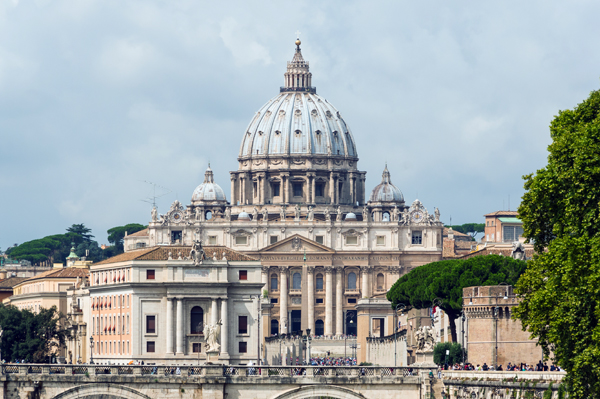 |
The Vatican Plazza is a complex
of many buildings and covers 5-1/2 hectures and containes abnout 1,400
rooms. The Pope lives here in a small apartment overlooking St. Peter's
Square. Most rooms house the library, museum and art collections. |
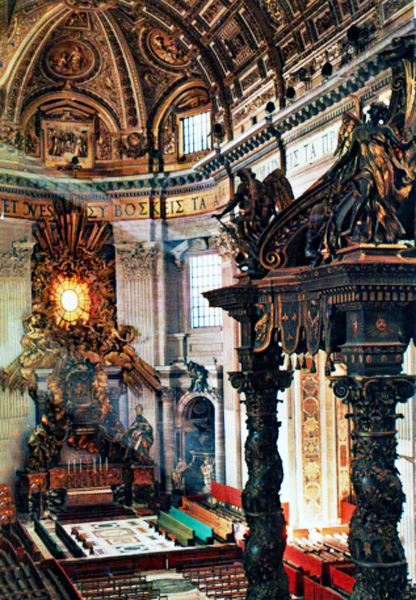 |
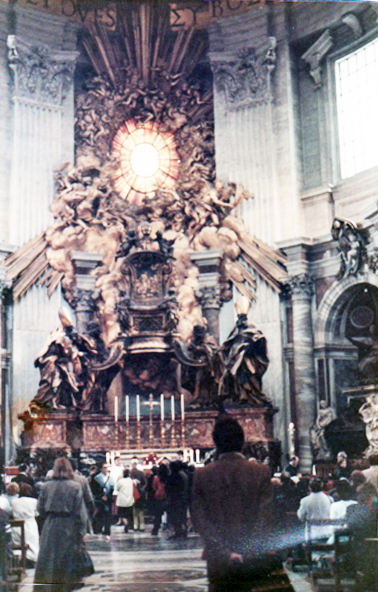 |
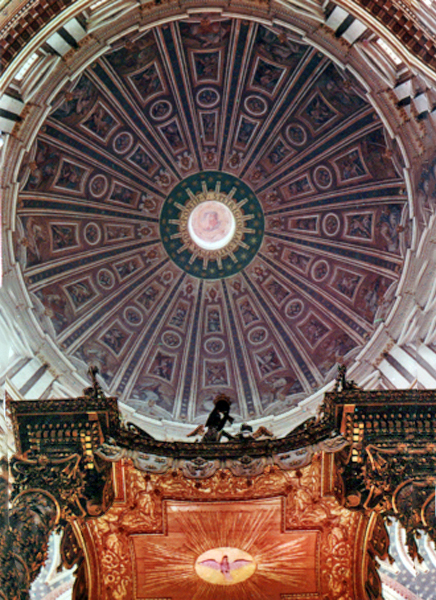 |
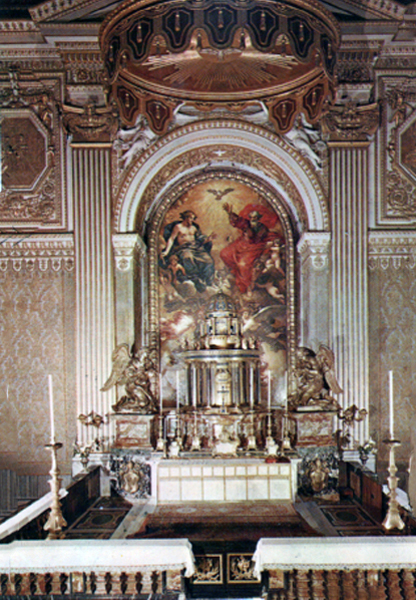 |
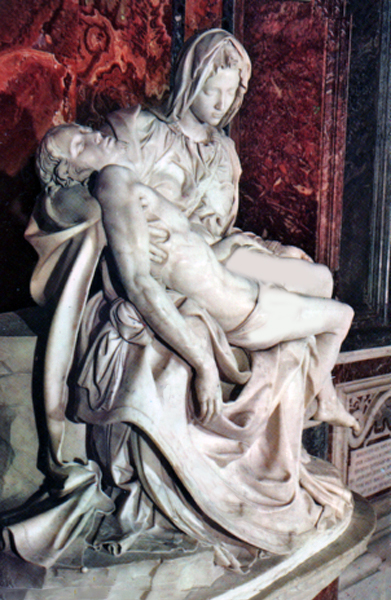 |
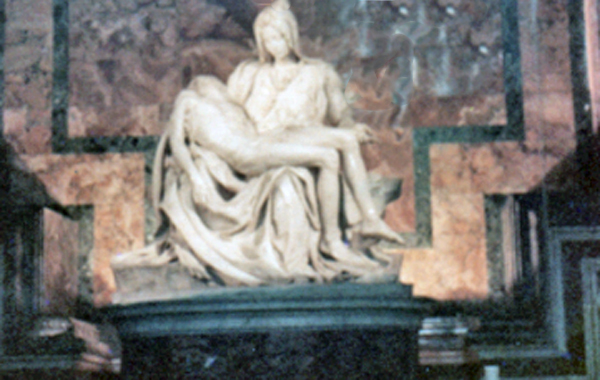 |
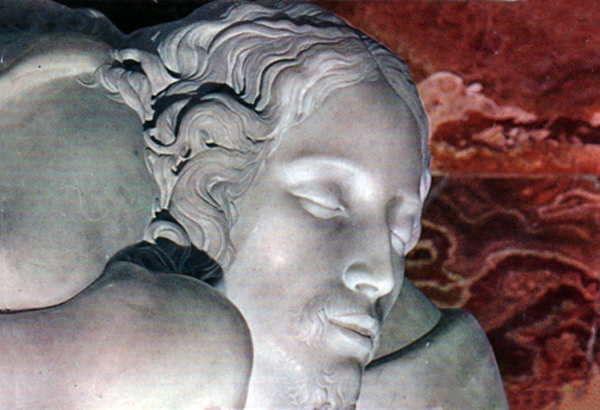 |
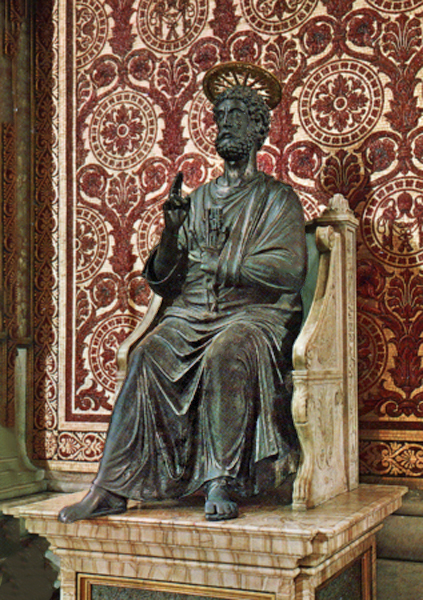 |
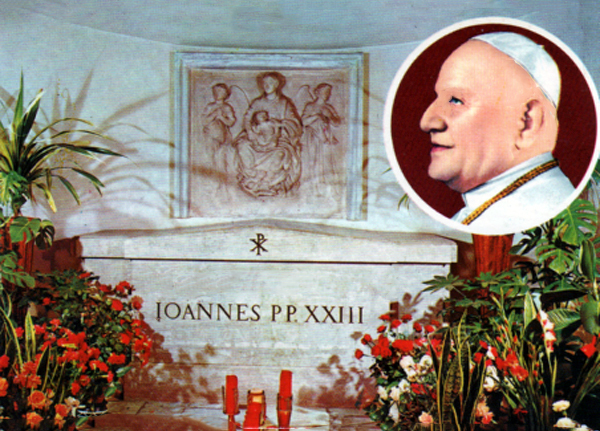 |
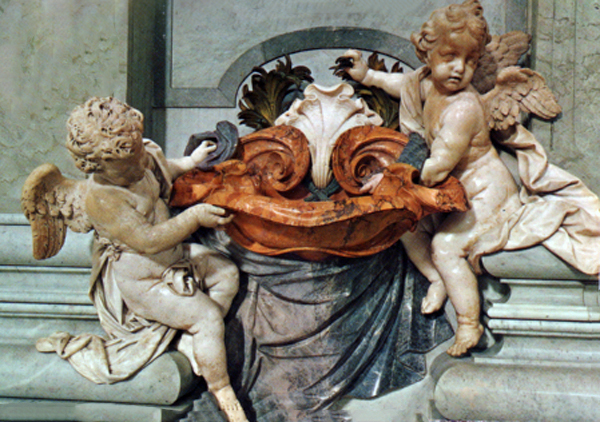 |
| |
 The
Arch of Constantine in Colosseo Square stands 21 meters high with
a width of about 26 meters. It consists of a large main arch at the
center and smaller, identical arcs on both sides. The Arch is located
near the Coliseum, which is partially shown in this photo (and also
shown below). The arch was constructed between 312 and 315, and dedicated
by the Senate to commemorate ten years of Constantine's reign (306–337)
and his victory over the then reigning emperor Maxentius (306–312)
at the Battle of Milvian Bridge on 28 October 312, as described on
its attic inscription. Not only did the Roman senate give the arch
for Constantine's victory, they were also celebrating a series of
games that happened every decade during the Roman Empire. On these
occasions they also said many prayers and renewed both spiritual and
mundane vows. However, Constantine had actually entered Rome on 29
October 312, amidst great rejoicing, and the Senate then commissioned
the monument. Constantine then left Rome within two months and did
not return until 326 The
Arch of Constantine in Colosseo Square stands 21 meters high with
a width of about 26 meters. It consists of a large main arch at the
center and smaller, identical arcs on both sides. The Arch is located
near the Coliseum, which is partially shown in this photo (and also
shown below). The arch was constructed between 312 and 315, and dedicated
by the Senate to commemorate ten years of Constantine's reign (306–337)
and his victory over the then reigning emperor Maxentius (306–312)
at the Battle of Milvian Bridge on 28 October 312, as described on
its attic inscription. Not only did the Roman senate give the arch
for Constantine's victory, they were also celebrating a series of
games that happened every decade during the Roman Empire. On these
occasions they also said many prayers and renewed both spiritual and
mundane vows. However, Constantine had actually entered Rome on 29
October 312, amidst great rejoicing, and the Senate then commissioned
the monument. Constantine then left Rome within two months and did
not return until 326
|
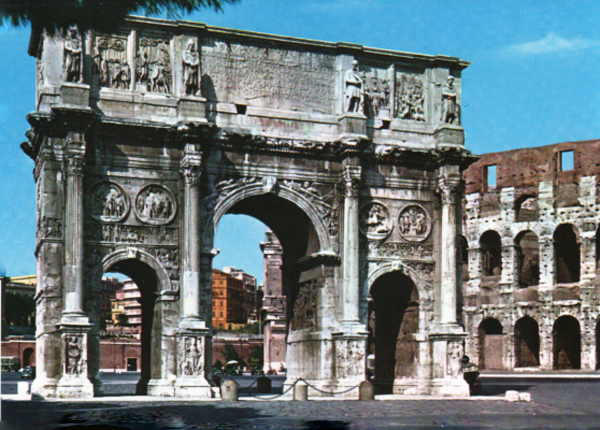 |
| |
Below: (4 postcards). The Roman Coliseum
is a magnificent building, of which only the stones bare of gold and
marble exist. It once served as an arena for gladiators fighting against
wild beasts. The Coliseum is the largest Roman amphitheatre in the world
(capable of holding an estimated number of spectators between 50,000
and 87,000, located in the centre of the city of Rome. It is the most
important Roman amphitheater, as well as the most impressive monument
of ancient Rome. It was Included in the list of UNESCO World Heritage
Sites in 1980. |
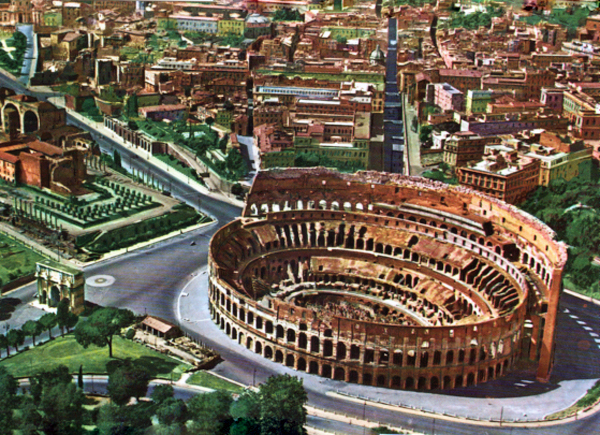 |
 |
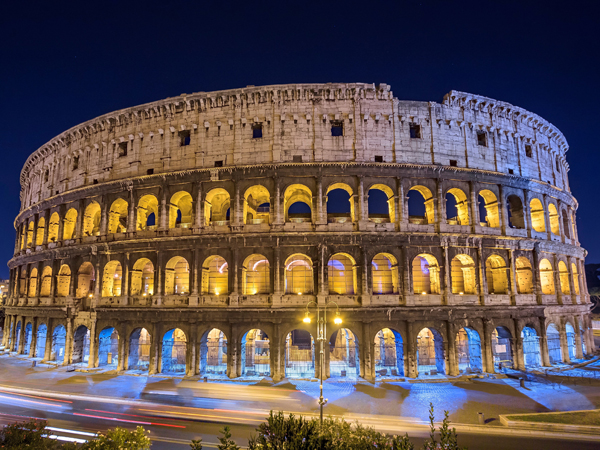 |
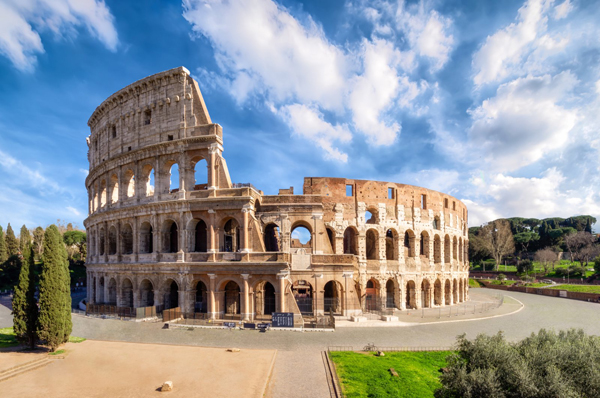 |
The building forms a polycentric oval with a perimeter of 527 m,
with axes measuring 187.5 and 156.5 m. The indoor arena measures 86
× 54 m, with an area of 3357 m². The current height reaches 48 m,
but originally reached 52 m. The structure clearly expresses the Roman
architectural and construction concepts of the early Imperial Age,
Arches and vaults are linked together in a tight structural relationship.
The first photo below was taken by Karen Duquette. The other photo
below is a postcard.
|
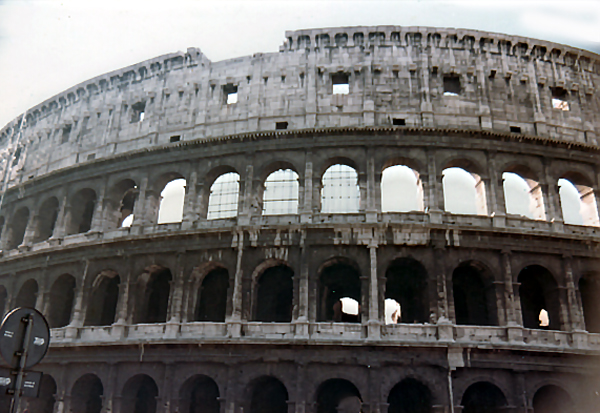 |
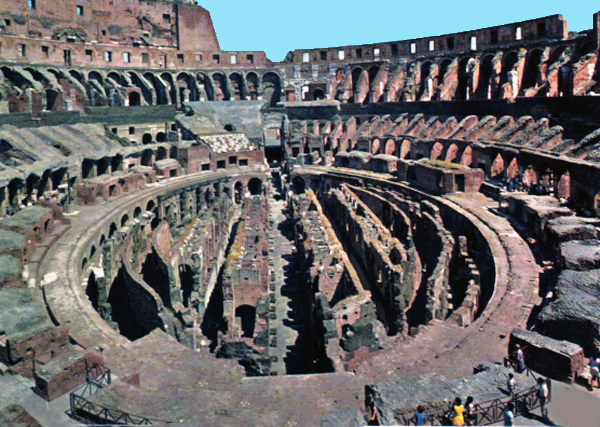 |
| |
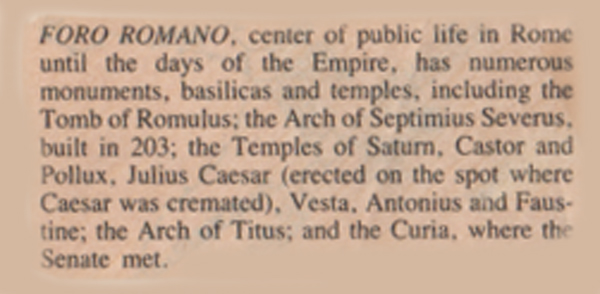 |
The Roman Forum is a rectangular
plaza surrounded by the ruins of several important ancient government
buildings at the center of the city of Rome. Citizens of the ancient
city referred to this space, originally a marketplace, as the Forum
Magnum, or simply the Forum. |
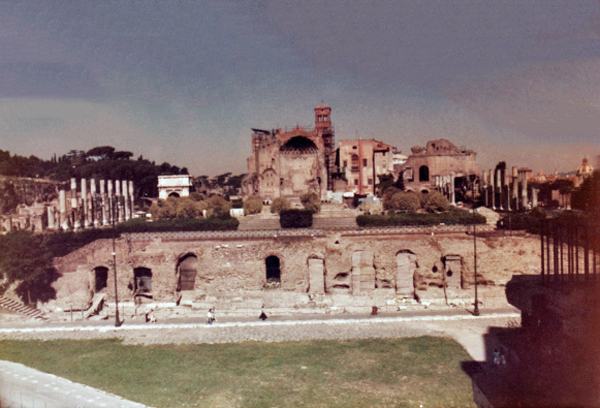 |
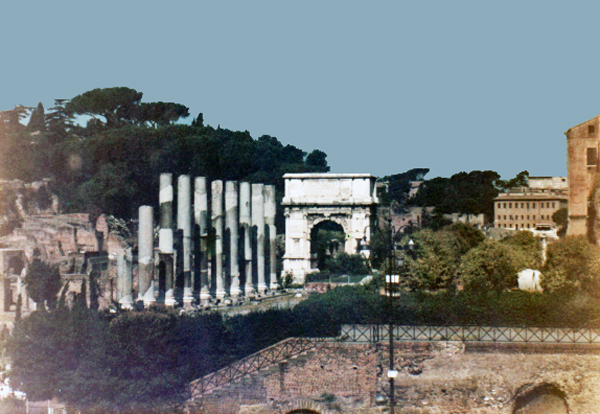 |
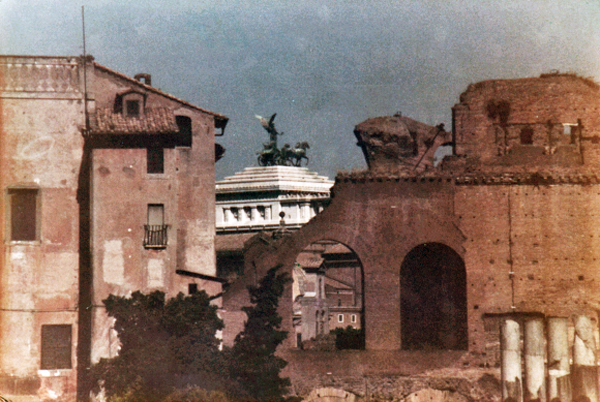 |
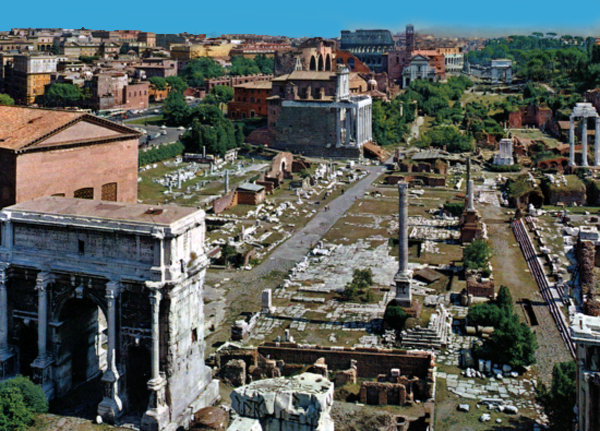 |
| |

Piazza di Spagna ("Spanish Square"), at the bottom of the
Spanish Steps, is one of the most famous squares in Rome, Italy. It
owes its name to the Palazzo di Spagna, the seat of the Embassy of Spain
to the Holy See. There is also the famed Column of the Immaculate Conception
of the Blessed Virgin Mary. In the middle of the square is the famous
Fontana della Barcaccia, dating to the beginning of the baroque period,
sculpted by Pietro Bernini and his son, the more famous Gian Lorenzo
Bernini.
The imposing 135-step staircase was inaugurated by Pope Benedict XIII
during the 1725 Jubilee; it was released (thanks to French loans granted
in 1721–1725) to connect the Bourbon Spanish embassy (from which the
square takes its name) to the Church of Trinità dei Monti. |
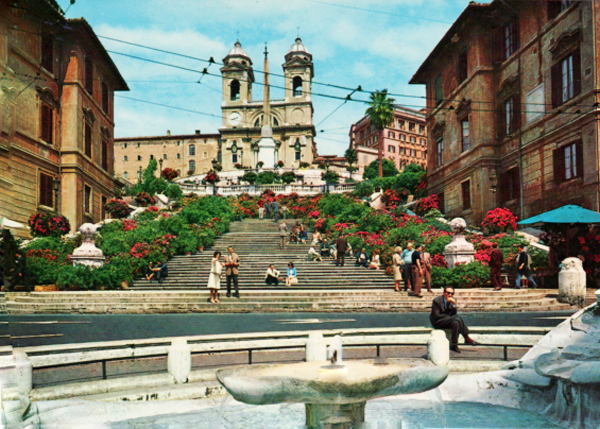 |
| |
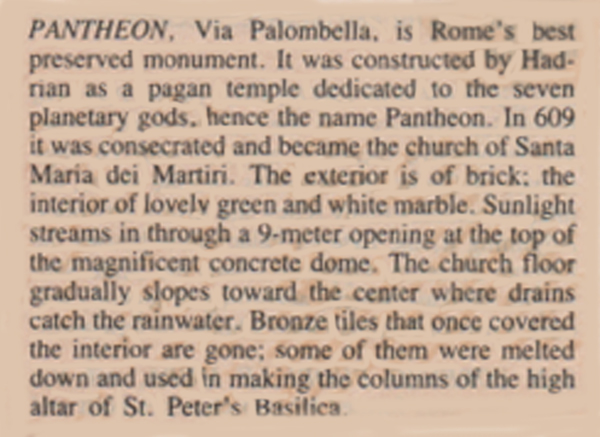 |
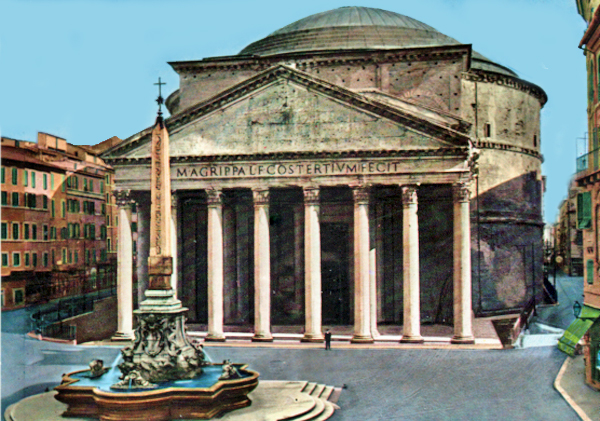 |
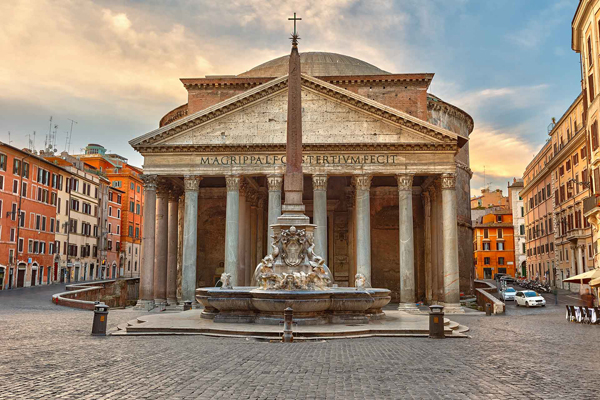 |
Below: Brian Duquette and
Karen Duquette inside the Pantheon |
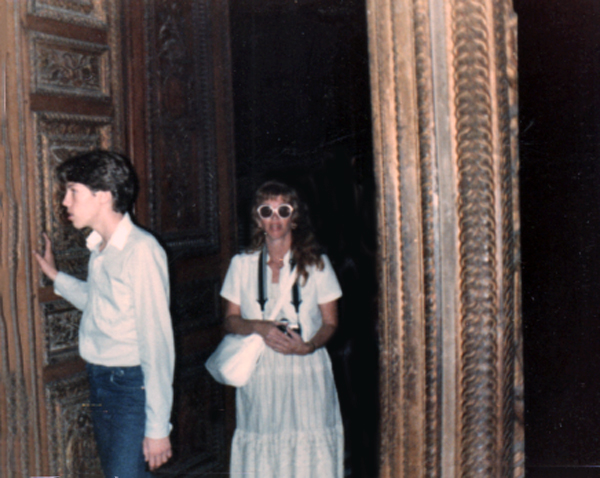 |
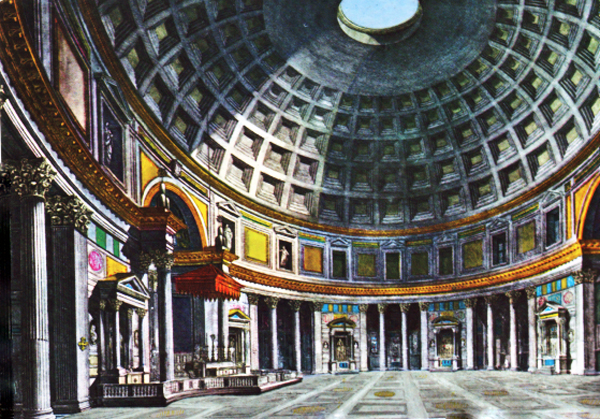 |
| |
|
Below: The Pyramid of Cestius is a Roman Era pyramid in Rome, Italy
near the Porta San Paolo and the Protestant Cemetery. It was built
as a tomb for Gaius Cestius, a member of the Epulones religious corporation.
It stands at a fork between two ancient roads, the Via Ostiensis and
another road that ran west to the Tiber along the approximate line
of the modern Via Marmorata. Due to its incorporation into the city's
fortifications, it is today one of the best-preserved ancient buildings
in Rome.
The building to the right of the pyramid is Porta San Paolo (English:
Saint Paul Gate), one of the southern gates in the 3rd-century Aurelian
Walls of Rome, Italy. The Via Ostiense Museum is housed within the
gatehouse. The Duquette's did not visit there. They did take some
photos next to the Pyramid, but those have been lost.
|
 |
| |
Below: A restaurant in Rome |
 |
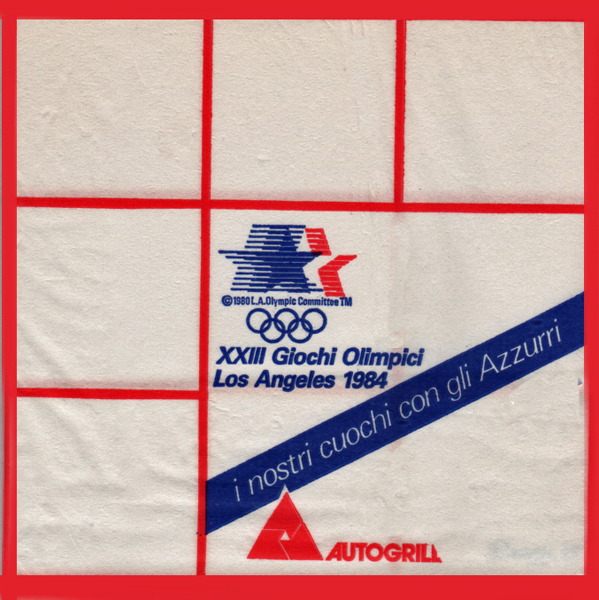 |
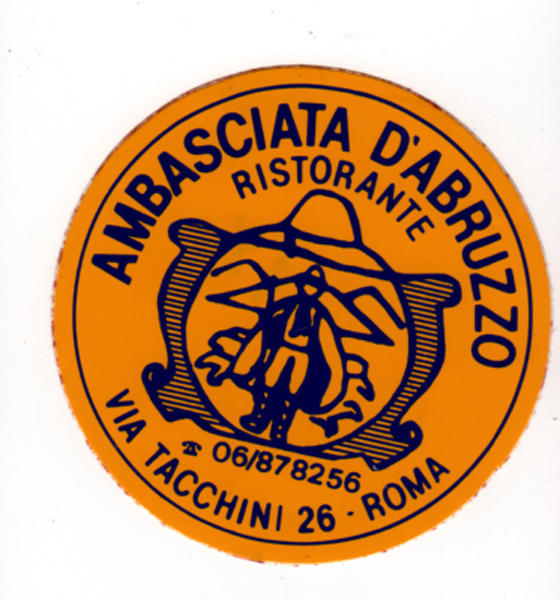 |
|
|
 |
Plus mixed plates of various fish, meats
of veal, roast beef, land and wild boar. Then came mixed fruit, grapes,
watermelon, peaches, and nectarines. Followed by cake, ice cream, and
three bottles of after-dinner drinks. |
Below: A waiter
posed for a photo with Karen Duquette and pinched her as he left, and
each time he passed by Karen, he pinched her again. Karen did not like
being pinched.. |
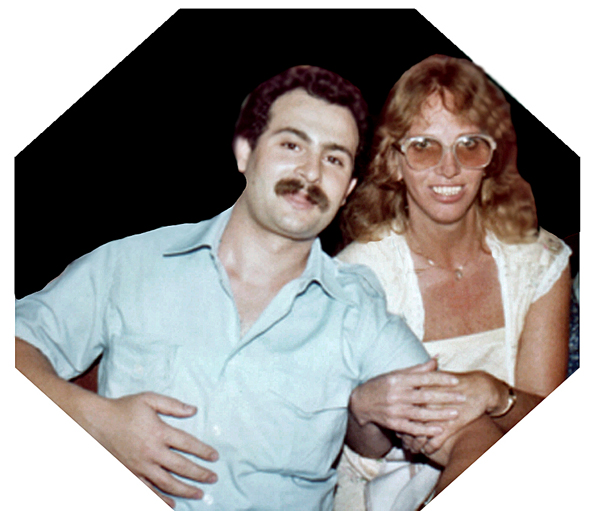 |
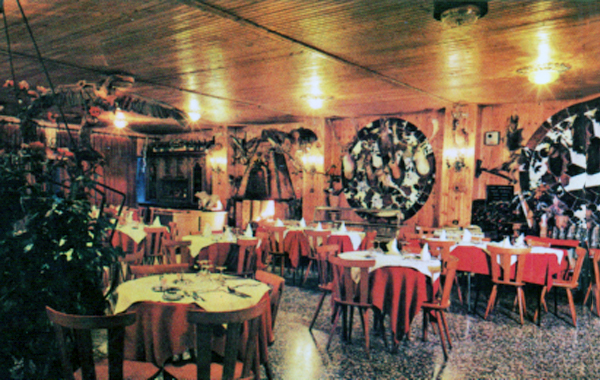 |
Menus were always scarce in Rome. Usually
they gave only one menu for four people. Once Lee, Karen and Brian Duquette,
ate with eleven (11) people and only got three menus. There were different
menus for natives and tourists. Once Karen tried to order what a native
person seated nearby was eating, and she was told no, she had to order
from the menu she was given,
Below: Lee and Karen Duquette with Corrine and Frank Sosnowski, plus
Rita, Paul and Stan. |
 |
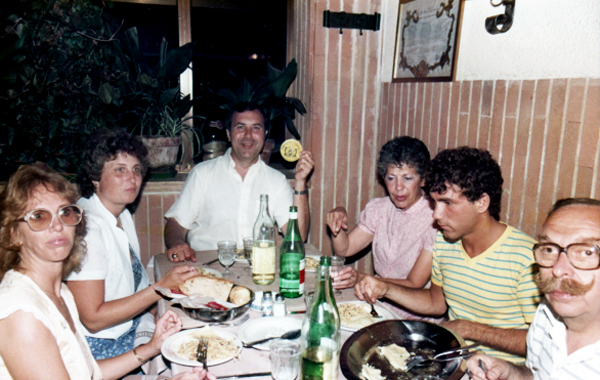 |
 |
 |
Below: While being a tourist in Rome, this is a photo
in the public restroom of the facilities. BOTH men and women came in
here. Often the public toilets would not have toilets at all, just a
porcelain hole in the ground as shown below, even in the ladies room. |
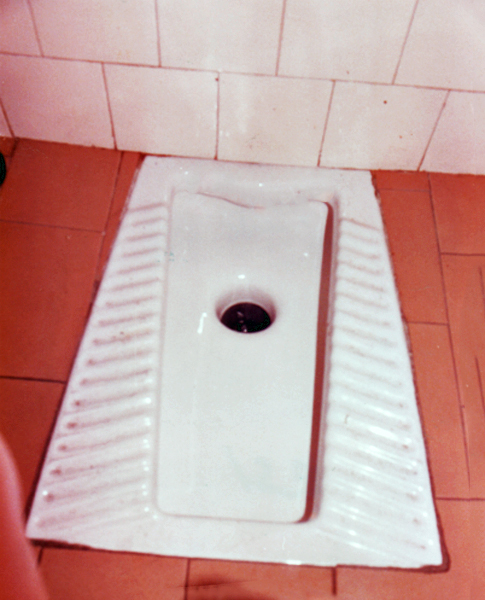 |
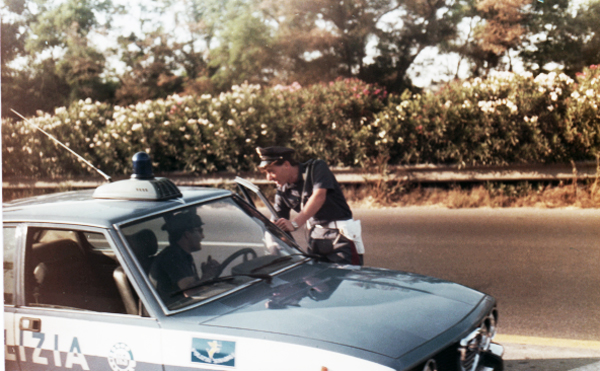 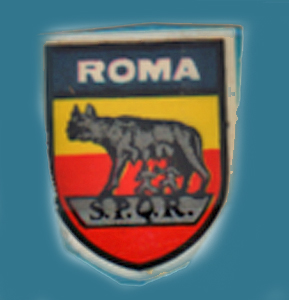 |
The Italian men stared and stared and stared.
There was a lot of pick-pocketing. Rome was a very dirty place and many
of the people were very nasty. |
 |
 |


























































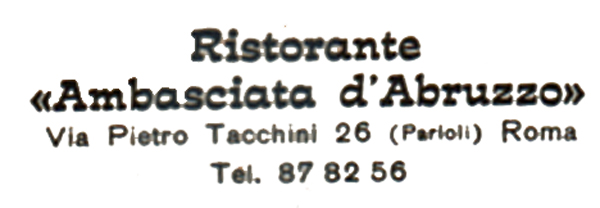







































 The
Arch of Constantine in Colosseo Square stands 21 meters high with
a width of about 26 meters. It consists of a large main arch at the
center and smaller, identical arcs on both sides. The Arch is located
near the Coliseum, which is partially shown in this photo (and also
shown below). The arch was constructed between 312 and 315, and dedicated
by the Senate to commemorate ten years of Constantine's reign (306–337)
and his victory over the then reigning emperor Maxentius (306–312)
at the Battle of Milvian Bridge on 28 October 312, as described on
its attic inscription. Not only did the Roman senate give the arch
for Constantine's victory, they were also celebrating a series of
games that happened every decade during the Roman Empire. On these
occasions they also said many prayers and renewed both spiritual and
mundane vows. However, Constantine had actually entered Rome on 29
October 312, amidst great rejoicing, and the Senate then commissioned
the monument. Constantine then left Rome within two months and did
not return until 326
The
Arch of Constantine in Colosseo Square stands 21 meters high with
a width of about 26 meters. It consists of a large main arch at the
center and smaller, identical arcs on both sides. The Arch is located
near the Coliseum, which is partially shown in this photo (and also
shown below). The arch was constructed between 312 and 315, and dedicated
by the Senate to commemorate ten years of Constantine's reign (306–337)
and his victory over the then reigning emperor Maxentius (306–312)
at the Battle of Milvian Bridge on 28 October 312, as described on
its attic inscription. Not only did the Roman senate give the arch
for Constantine's victory, they were also celebrating a series of
games that happened every decade during the Roman Empire. On these
occasions they also said many prayers and renewed both spiritual and
mundane vows. However, Constantine had actually entered Rome on 29
October 312, amidst great rejoicing, and the Senate then commissioned
the monument. Constantine then left Rome within two months and did
not return until 326 

